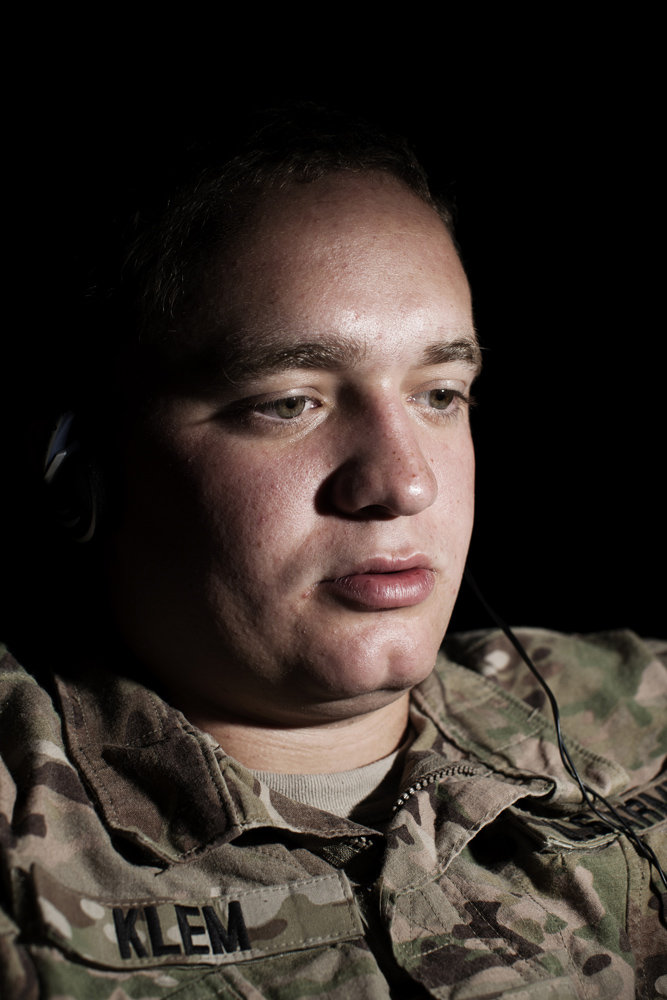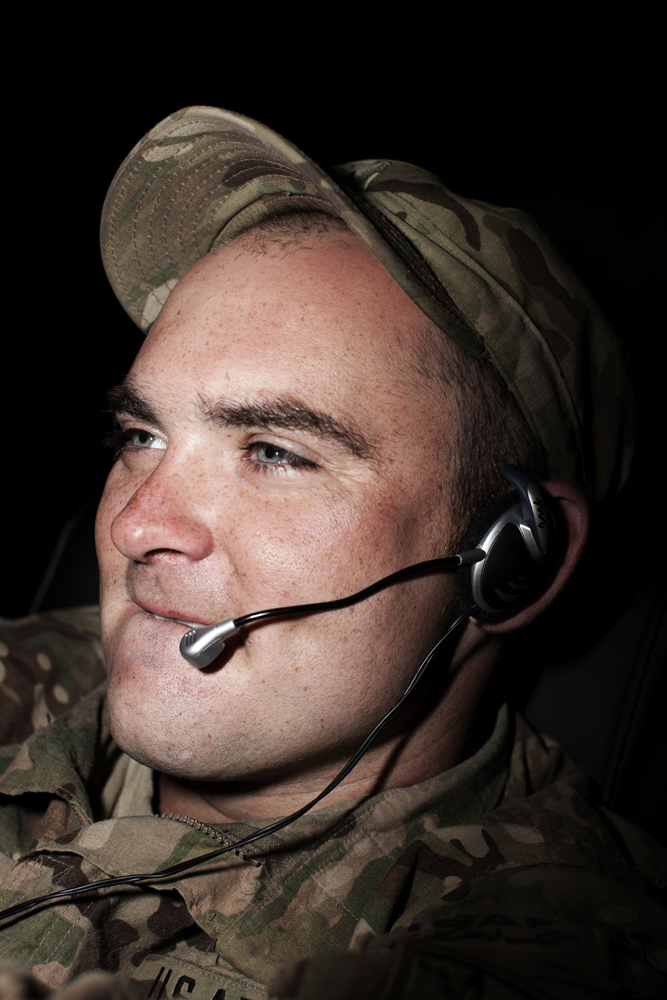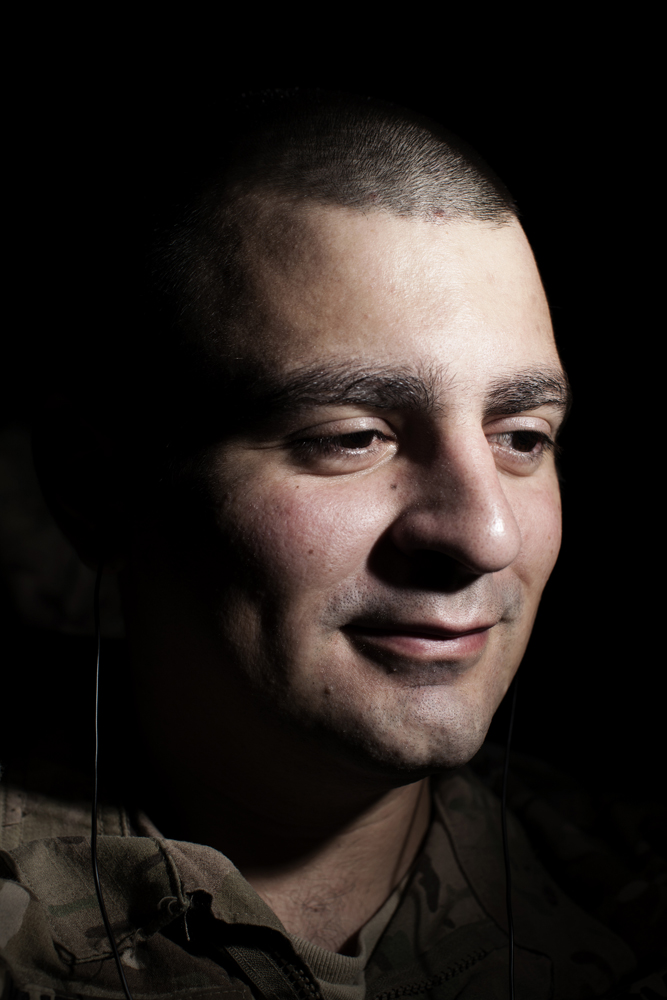
On a recent embed with U.S. Army Infantry troops in Afghanistan’s Paktika province, I found myself challenged by how to tell the story. Patrols had been short and infrequent, interaction among soldiers was sparse and didn’t translate into revealing pictures, and there was little engagement with Afghan civilians. Here I was, four kilometers from the volatile and strategic Afghanistan-Pakistan border, struggling to conceptualize a visual story.
During the downtime I sat in the Morale, Welfare and Recreation room, where I would watch the soldiers use the internet to connect to the outside world. I’d hear soldiers have softly spoken arguments with wives or girlfriends, tones of longing in their discussions, plans being forged, laughter, as well as love and friendship being both exchanged and broken.
After being privy to this, it occurred to me that this phenomena was the story itself. It wasn’t an obvious narrative about war—the angst and boredom in longing to be home—but that is war.
The faces of young men gazing into computer screens using Facebook and talking on Skype epitomized this sense of boredom and longing, so I went about capturing the expressions of soldiers distracted by a technology that connects them to something abstract, yet affords them the comfort in looking home, at war.
Adam Ferguson is a frequent contributor to TIME. Represented by VII, Ferguson has covered conflict for several years, primarily in Afghanistan.














More Must-Reads from TIME
- Cybersecurity Experts Are Sounding the Alarm on DOGE
- Meet the 2025 Women of the Year
- The Harsh Truth About Disability Inclusion
- Why Do More Young Adults Have Cancer?
- Colman Domingo Leads With Radical Love
- How to Get Better at Doing Things Alone
- Michelle Zauner Stares Down the Darkness
Contact us at letters@time.com